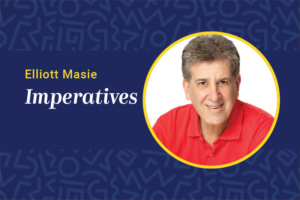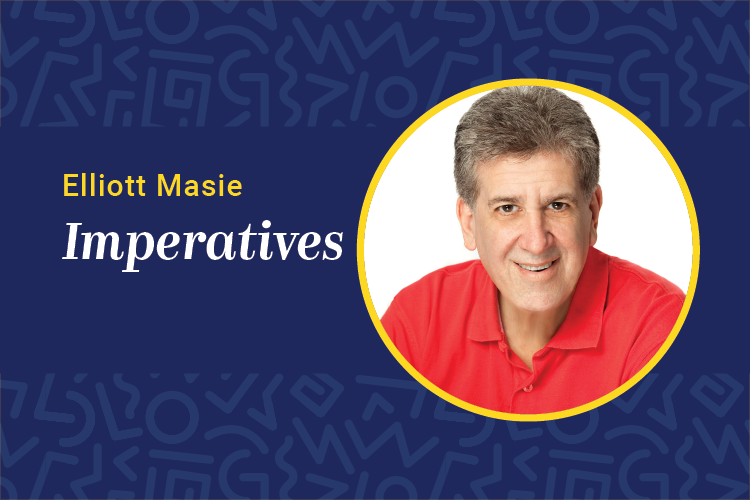 Picture this: An employee logs in for work in the morning and sees a box on their screen that reads, “Your job is being updated — click here to activate.”
Picture this: An employee logs in for work in the morning and sees a box on their screen that reads, “Your job is being updated — click here to activate.”
In the old days we would talk about changing jobs, systems or skills as complex and difficult processes, often requiring training and coaching over relatively long periods of time in order to overcome resistance.
But in these days of rapidly changing business realities, shifting customer requirements, data analytics and more, we should prepare for a workplace and workforce geared toward regular updates.
Back in 1994, Bill Gates asked me to host a nine-month TV show called “Microsoft TV — Preparing for Windows ’95.” Each month, we had hundreds of thousands of IT professionals receiving this satellite broadcast about the upcoming changes as the new system was rolled out in August 1995. Millions of end users were sent to an Upgrading to Windows ’95 seminar that often lasted two days.
Now our Apple and Microsoft Systems offer fairly regular updates that are downloaded and deployed with workflow support built into the applications and screens. What once took weeks of preparation and training is now almost seamless and integrated into our work.
My Tesla electric car has really changed my view about job updates. Every few weeks, the screen on my Tesla displays this message: “Update ready to be downloaded.” It does not say what the new features or changes will be. I am always surprised and curious, so I click the activate button to be greeted an hour later with the new things that my Tesla can do. Very often, the changes are evident in a changed dashboard, controls and even basic features of the car (e.g., accident avoidance alerts and alarms based on input from a dozen sensors and cameras). With just a click, the car, and even I, the driver, are now updated.
Prepare for job, system, role and skill updates to be integrated and sometimes automated throughout your enterprise. Here are a few trends we are forecasting about these updates.
System updates will be continuous and personalized. Corporate sales, customer service, manufacturing and HR systems will shift from “big bang” updates once or twice a year to continuous feature updates that leverage a personalized notification system based on each user’s current and future needs.
New information will be needed each week. An employee’s agenda for the coming week will be scanned by an AI-based curation system that provides updated information on the people, accounts, meetings and realities the employee might face.
Imagine a retail store that will begin selling a new line of cell phones that will use 5G technology. The skills needed by the sales force will be framed up in a skills mind map that highlights what each employee can do to articulate 5G. The skills will be color coded red, yellow or green, based on each employee’s readiness. Several weeks before the rollout of the new cell phones, learning resources will be targeted toward employees after assessment of their yellow and red items.
As we evolve roles and processes, updates may be more focused on deleting rather than adding elements. When my Tesla loses a function, I need to understand why it has been deleted. Updating will require sensitivity around removing favorite functions in the workplace.
Data analytics will drive updates. The goal of shifting to updates in the workplace is to become more agile and target how specific changes in systems, skills, roles and tasks can lead to better outcomes. We need to use data analytics to predict and target updates.
Failure will be key in the change process. As we update skills and roles, there will be a natural and even critical role for the employee to occasionally fail or forget a change. Our systems might provide warnings and increased prompting for tasks that are new, even allowing the user to simulate a new action and fail safely. Embedded simulations will provide a healthier role for failure.
Managing and optimizing the update process is a new and exciting role for learning and development leaders. We will need to leverage and combine our expertise in skill development, workflow support, organizational change, learning data analytics and user experience. Let’s update our readiness to lead the charge in workplace updates.














